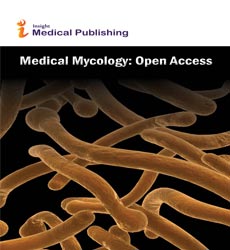Abstract
Future Microbiology 2020 Diagnostic Clinical Microbiology Laboratories and COVID-19
Diagnostic Clinical Microbiology laboratories performing COVID-19 testing have been hit particularly hard during the COVID-19 pandemic and this will likely continue for many months to come. In addition to testing for COVID-19, patients requiring hospitalization, including those admitted to the intensive care unit often require extensive microbiology investigations including blood culture sets, sputum/urine for culture and susceptibility testing and others. How prepared are clinical microbiology laboratories for COVID-19 testing along with “routine” clinical microbiology services? The pressure for preparedness is related to staffing and hours of operation, technology and supply chain. On our service, COVID-19 specimen volumes have been as high as 500/day with our routine microbiology specimen volumes between 1000-1400 specimens/day. As such, COVID-19 represents a 26-33% increase in specimen numbers. Testing for COVID-19 in our hospital is with a nucleic acid amplification test and serology is expected to follow shortly. To handle COVID-19 test requests we needed to increase capacity for nucleic acid extraction and amplification/detection technology. Coincidental with increasing molecular technology capacity, we increased the number of medical laboratory technologists trained for molecular based testing. We also needed to increase capacity for blood cultures. Supply chain has and continues to be a challenge for diagnostic laboratories in terms of technology and supplies/reagents. Delays in delivery time complicates operation and “new test” introduction. COVID-19 has pushed the limits of clinical microbiology laboratories and with the continuing spread of the virus locally and globally, we can expect further pressures on our services. Total laboratory automation in clinical microbiology might be part of the solution.
Author(s):
Joseph M. Blondeau, Royal University Hospital and University of Saskatchewan, Saskatoon, Saskatchewan, Canada.
Abstract | PDF
Share this

Google scholar citation report
Citations : 164
Medical Mycology: Open Access received 164 citations as per google scholar report
Abstracted/Indexed in
- Google Scholar
- China National Knowledge Infrastructure (CNKI)
- Directory of Research Journal Indexing (DRJI)
- WorldCat
- Publons
- Geneva Foundation for Medical Education and Research
- Secret Search Engine Labs
Open Access Journals
- Aquaculture & Veterinary Science
- Chemistry & Chemical Sciences
- Clinical Sciences
- Engineering
- General Science
- Genetics & Molecular Biology
- Health Care & Nursing
- Immunology & Microbiology
- Materials Science
- Mathematics & Physics
- Medical Sciences
- Neurology & Psychiatry
- Oncology & Cancer Science
- Pharmaceutical Sciences
